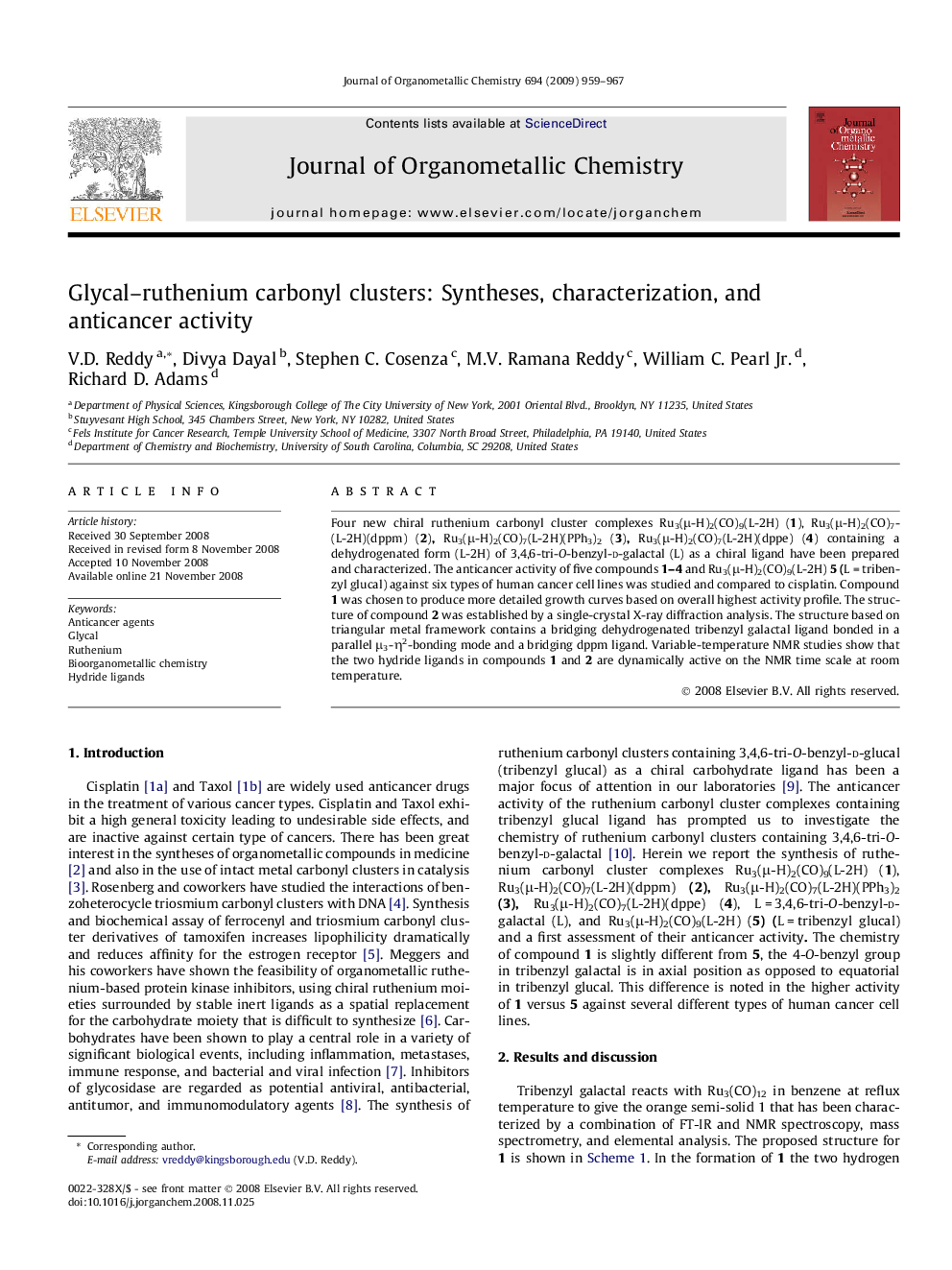| Article ID | Journal | Published Year | Pages | File Type |
|---|---|---|---|---|
| 1322872 | Journal of Organometallic Chemistry | 2009 | 9 Pages |
Four new chiral ruthenium carbonyl cluster complexes Ru3(μ-H)2(CO)9(L-2H) (1), Ru3(μ-H)2(CO)7(L-2H)(dppm) (2), Ru3(μ-H)2(CO)7(L-2H)(PPh3)2 (3), Ru3(μ-H)2(CO)7(L-2H)(dppe) (4) containing a dehydrogenated form (L-2H) of 3,4,6-tri-O-benzyl-d-galactal (L) as a chiral ligand have been prepared and characterized. The anticancer activity of five compounds 1–4 and Ru3(μ-H)2(CO)9(L-2H) 5 (L = tribenzyl glucal) against six types of human cancer cell lines was studied and compared to cisplatin. Compound 1 was chosen to produce more detailed growth curves based on overall highest activity profile. The structure of compound 2 was established by a single-crystal X-ray diffraction analysis. The structure based on triangular metal framework contains a bridging dehydrogenated tribenzyl galactal ligand bonded in a parallel μ3-η2-bonding mode and a bridging dppm ligand. Variable-temperature NMR studies show that the two hydride ligands in compounds 1 and 2 are dynamically active on the NMR time scale at room temperature.
Graphical abstractRuthenium carbonyl cluster complexes containing a dehydrogenated form (L-2H) of 3,4,6-tri-O-benzyl-d-galactal (L) as a chiral ligand have been prepared and the complex Ru3(μ-H)2(CO)7(L-2H)(dppm) (2) was structurally characterized. These complexes show promising anticancer activity against six types of human cancer cell lines.Figure optionsDownload full-size imageDownload as PowerPoint slide
